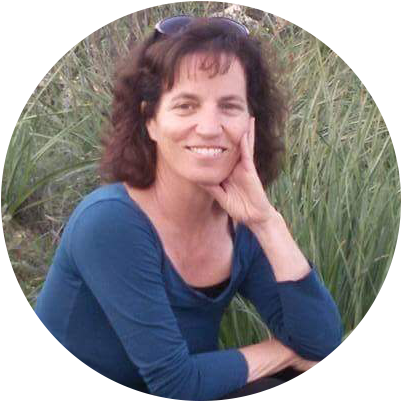Overview:
Everest Base Camp Trek is one of the most famous and adventurous trekking routes throughout the world. The trek takes you amidst the Himalayas and the unique Himalayan culture. The trek is famous as the endpoint of the trek is the Base Camp of the world's tallest mountain, Mount Everest. Everest Base Camp offers an adventurous route with many breathtaking landscapes to explore. This iconic journey lets you immerse yourselves in the natural beauty of the high altitude landscape, explore hidden Buddhist monasteries such as Tengboche monastery, travel through the sherpa villages, learn their way of earning a living in the mountain region, encounter the rare high altitude flora and fauna preserved in the Sagarmatha national park, and capture the majestic snow-capped giant mountains such as Mount Everest (8848 m), Lhotse (8516m), Cho You (8201 m), and Makalu (8463 m).
Everest Base Camp trek details
-
Distance:120 km
-
Days required-12-14 days
-
Highest point-5240 m at Kala Patthar
-
Difficulty level-The trek is difficult for beginners but moderate for trekkers, the altitude makes the trek hard so acclimatization days are necessary.
-
Permits-Red Rose Travels will manage all the permits and legal issues such as local government fees and Sagarmatha national permits.
-
Cost per day-The cost is approximately 29 US dollars without any flights and 58 US dollars per day including the permits and transportation costs.
-
Accommodation-Mainly guest houses, Camps when needed.
Is a guide necessary for the Everest Base Camp trek?
According to the laws of Nepal, a tourist must hire a licensed guide or a porter but the Everest region is an exception making solo trekking possible in Everest Base Camp. So you don't need a guide compulsorily.
Where is Everest Base Camp?
Everest Base Camp lies in the Khumbu region of North East Nepal at an altitude of 5364 meters. Everest Base Camp is the Camp for mountaineers who are heading to summit Mount Everest. This is the closest point of the mount Everest you can reach without any mountaineering tools and types of equipment. The mountaineers who are trying to summit Everest stay here and prepare themselves to climb Everest.
There are two main Camps for Everest:
North Base Camp in Tibet and the South Base Camp in Nepal. The South Base Camp is in Nepal located in the Sagarmatha National Park.
How to trek to the Everest Base Camp?
You have 3 main options if you want to trek Everest Base Camp:
-
Buying a package from a travel agency
-
Hiring a guide or porter
-
Solo trekking
The package tour with the travel agency is the best and the optimal one if you want a comfortable trek as the travel agency will plan everything for you. The permits, porters, guides, accommodation everything will be managed by the travel agency but buying a package is costlier than other options. Trekking with a guide or porter is another option as the guide will guide you through the routes. You can easily hire a guide at Kathmandu but you must manage the accommodation and permits for the trek yourself. If you want to trek independently then you have to reach Lukla by flight, bus or any transportation you prefer. The trail of EBC is not so confusing so you can navigate through trails easily. There are plenty of guesthouses where you can rest overnight.
Accommodation on the Everest Base Camp trek
There are many tea houses at different points in the Everest Base Camp trekking route. The tea houses are clean and comfortable. You can also get breakfast in the tea houses. The cost of the tea houses lies between free and 3 US dollars as long as you have food in the tea house. The tea houses provide you with blankets at night but in case of cold nights, you might need a sleeping bag to keep yourself warm.
As you gain height the expenses increase, after Namche bazaar you will have to pay for the hot showers which costs 5 US dollars at most of the place. During cold seasons the water might freeze so you must bring wet wipes to clean yourself as soap and water is not available at higher elevations. Charging will cost you 2 US dollars per item or hour, there are no charging ports in the room so you have to charge it in the dining room. The room does have lights but has no ports. The tea houses have dining halls where you can rest and have food with other trekkers. There will also be a wooden fireplace in the middle making the dining room warmer than other rooms. Most of the toilets in the tea houses are Western toilets, you must bring your own tissue paper as there might be a scarcity of water due to the temperature being too cold.
Food on the Everest Base Camp trek
You can have meals in the tea houses, mostly you will find dal bhat for lunch and dinner in the tea houses. The cost of one meal is approximately 8 US dollars. The tea house will provide free accommodation as well if you have dinner and breakfast over there. If you don't the accommodation might be 3 to 15 US dollars per night. Dal bhat, potatoes, stew, and lentils are the main foods served here. Water can be refilled in the tea houses but if you want hot water it will cost you 50 to 100 Nepali rupees or more as we go up.
Starting the Everest Base Camp trek
Flight to Lukla
You can reach Tenzing-Hillary Airport in Lukla directly by flight from Kathmandu. It is better to book the flight early in the morning as later in the day the flight might get cancelled due to the weather conditions. Another alternative to reach Lukla is to drive to Ramechhap from Kathmandu and take a flight from Ramechap to Lukla. You can use this alternative in case the Kathmandu flights are suspended or cancelled due to bad weather.
Drive to Lukla
If you prefer drive-over flights then you can take a jeep from Kathmandu to Salleri which will cost you 17 US Dollars and take 8 hours or you can take a bus to Salleri which will cost you 10 US Dollars and take 10 hours. From Salleri you can reach Lukla by trekking for 2 to 3 days.
Another alternative is heading to Jiri by bus which will cost you 10 US Dollars and take 9 hours. From Jiri, you can trek to the Everest Base Camp skipping Lukla passing through Salleri, Ringmo, Kharikhola, Puiyan, Phakding, and Namche joining the main route after 5 days at Namche Bazaar.
Everest Base Camp permits
The permits you need for the EBC trek are:
Khumbu rural municipality permit, which will cost you 30 US Dollars per person for the first four weeks and then later 25 US Dollars per person will be added. You can get this permit in the permit office at Lukla on the route.
Another permit is the Sagarmatha National Park entry permit which will cost you 30 US Dollars per person. You can get this permit at the entrance gate to Monjo or at the Department of the National Park Wildlife Conservation counter at Bhrikuti Mandap in Kathmandu.
A TIMS card is not required for the EBC if you trek through Lukla but if you trek through Jiri or Salleri the TIMS card may be needed.
Difficulty of the Everest Base Camp trek
Without any prior trekking experience the trek might be very difficult but if you have some trekking experience and your fitness level is good then the trek might be considered medium or slightly hard level. You have to walk 4 to 6 hours daily for 12 or more days, some days will be for rest to acclimatize your body. You have to carry your bags in case you don't hire a porter. You don't need any special climbing skills for the trek, there might be steep climbs which can be climbed with mild effort. The main challenge of the trek is the altitude, as you gain altitude the possibility of altitude sickness may increase so it is mandatory to take some rest days as you gain height letting your body adapt to the height.
Best time to visit Everest Base Camp
The best season to visit Everest Base Camp is during the pre-monsoon, from March to May and then post-monsoon, from September to November. During these seasons the weather is more stable and the skies are clearer making the view more beautiful. It’s best to avoid the winter season as the temperature drops to 30 Celsius making the trek very challenging and dangerous.





